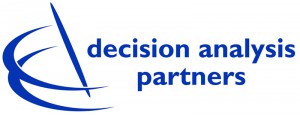SITUATION
 All disasters are local. Recovery after a disaster isn’t complete until individuals and families recover from their personal losses. To facilitate recovery, Governments play a critical role in disaster avoidance, preparation, and response.
All disasters are local. Recovery after a disaster isn’t complete until individuals and families recover from their personal losses. To facilitate recovery, Governments play a critical role in disaster avoidance, preparation, and response.
In addition to customary natural and man-made disaster risks,Romaniais subject to severe earthquakes, floods and flash floods. Recently, the Government of Romania began a program to strengthen their ability to assist citizens in emergency situations. This includes the implementation of an Emergency Management Information System (EMIS) to support emergency planning and response at the national, county and local levels.
Reliable communications is essential for warning the public of impending severe weather and floods, dispatching first responders, and coordination of relief resources and supplies. The USTDA provided a Technical Assistance grant to help Romania’s General Inspectorate for Emergency Situations (GIES) assess what weather, hydrology and earthquake information was needed from other government agencies. The project also assessed whether their planned data communications network would effectively support their operational requirements during emergencies. GIES selected decision analysis partners (dap) to conduct the project.
APPROACH
dap cast a wide net to learn as much as possible about Romania’s existing weather, hydrology and seismic monitoring and forecasting systems and the information products available. The team also studied similar systems in other countries to determine best practices and lessons learned. Recommendations were made for the delivery and use of environmental information in support of Romania’s Emergency Management operations.
Plans for the EMIS application and its supporting network were also studied. Existing and planned network facilities were reviewed with service providers. The consulting team also performed a detailed traffic analysis based on forecasted data volumes to predict network utilization and system response times. It was determined that the capacity of one critical network component was undersized while others had excess capacity. Recommendations for added network diversity were also made.
RESULTS
dap presented recommendations for upgraded environmental information products, enhanced use of GIS technology, and recommended network modifications. An analysis of Cell Broadcast technology and its ability to enhance GIES’ public warning capabilities was also provided.






